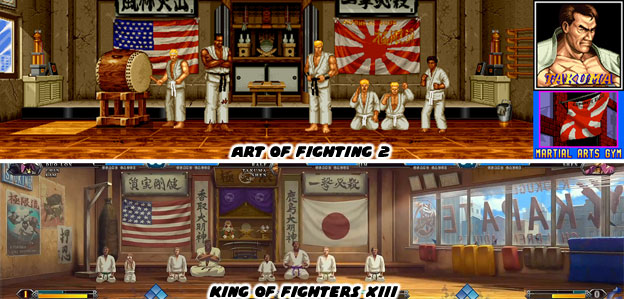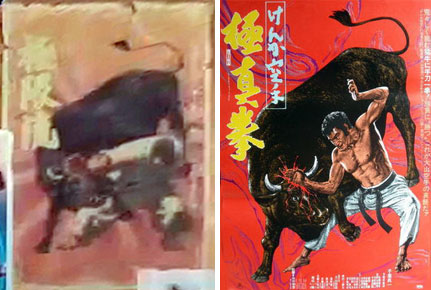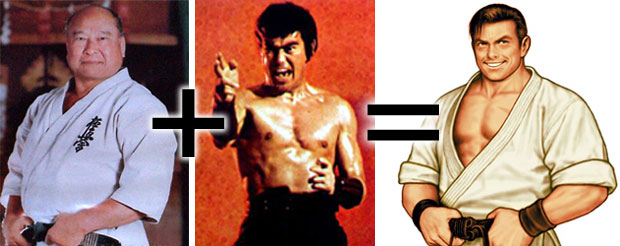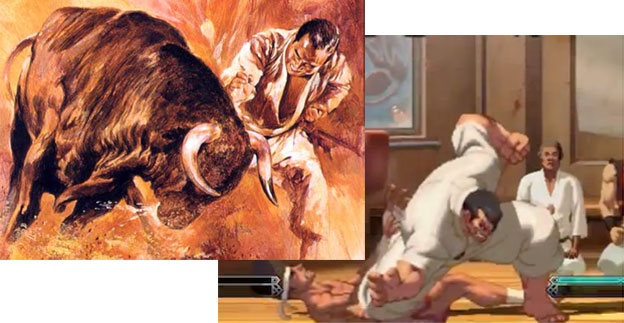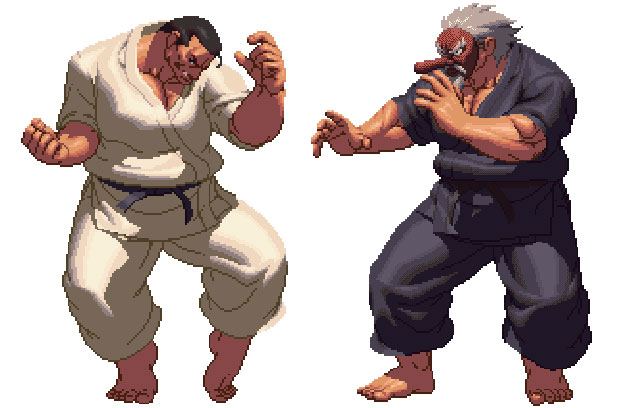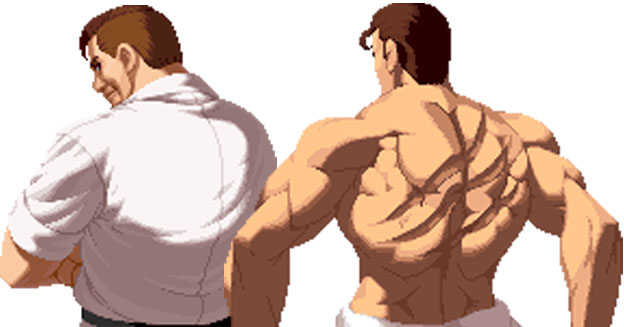
The legend of Mr. Karate was what drew practitioners into Southtown, none of them was more important as a student and a character than Marco Rodriguez. This character was absent from my Coloring Perception series. I could not find a proper place to mention him with regards to black character designs in fighting games. Marco had one foot in the absurd design typical of many fighting game developers, yet he was not a clown. He had as many abilities and attacks as Takuma, Ryo, Robert or Yuri. It was his zest for the Kyokugen style that made him a standout. Rodriguez was not only the star pupil but also its biggest supporter. While the Sakazaki's were competing in the KOF tournaments, Buriki One tournament or chasing bad guys around in the Art of Fighting titles it had been Marco that kept the school alive, paid the bills, promoted the system. His eyes would well up with pride whenever he thought about Ryo and how much the school meant to him.
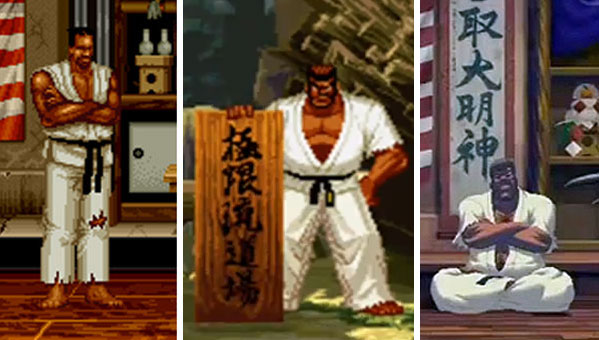
Marco had first appeared as a background character in Takuma's Art of Fighting (AoF) 2 stage. The designers never forgot him so when they redrew the stage for the King of Fighters XII they made sure to include his updated look with a pompadour and sideburns instead of braids. He was also sitting in the dojo laughing at the fighters, it said about the personality and the abilities of Rodriguez. Marco had first appeared as a playable character in Garou: Mark of the Wolves. It was notable because Marco was trained by Ryo and was the first Kyokugen fighter to appear in the Fatal Fury (FF) series. Released in 1999 Mark of the Wolves was the final game in the Fatal Fury series. Most fans of the SNK titles had wondered which star was the best fighter in the universe. Was it Ryo from the Art of Fighting or Terry Bogard from Fatal Fury? SNK would only tease gamers by saying that both universes were connected and even set within the same city and timeline. The boss character from Fatal Fury appeared as a boss in the Art of Fighting 2 yet none of the heroes ever crossed over until the original King of Fighters was released in 1994. However to fans it was a bit of a cop-out. The KOF series had mixed in a lot of other characters and changed the gameplay so that it was neither Fatal Fury nor the Art of Fighting. Both of the earlier games had a unique design aesthetic and control scheme. The sprites featured in the FF series were smaller with the gameplay being focused on allowed characters to jump between to or three different planes so that they could go around opponents. It was a precursor to the first 3D games. By comparison the AoF featured very large, highly detailed sprites and tried to capture a more realistic feel for the fighters. The characters could bruise and their clothes could even tear depending on how much damage the players sustained. Yet neither development team would allow for the stars from one title to appear on the other game.
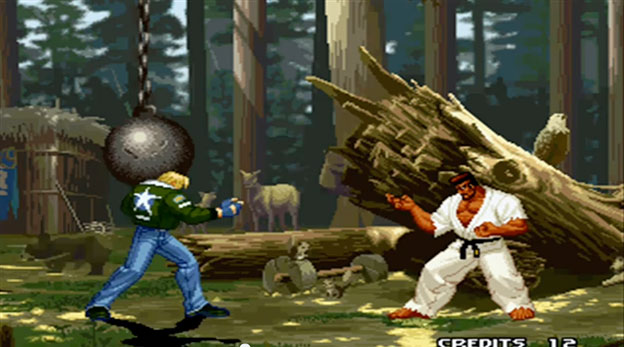
Garou: Mark of the Wolves was the closest that the two universes would come together outside of the KOF. An older, stronger Terry Bogard was the star of the game yet there was one Kyokugen master in the game as well only it wasn't Ryo Sakazaki or Robert Garcia. Marco Rodriguez was a student of Ryo's and had committed himself completely to the art form. He was so dedicated in fact that he was living like a hermit in the nearby Sarah Forest, training in complete isolation in the same ways of the founder of Kyokugen. Marco had the same moves of the main AoF stars but the control and presentation was decidedly FF. It was a way to finally get both universes in one title without upsetting the rival fans.
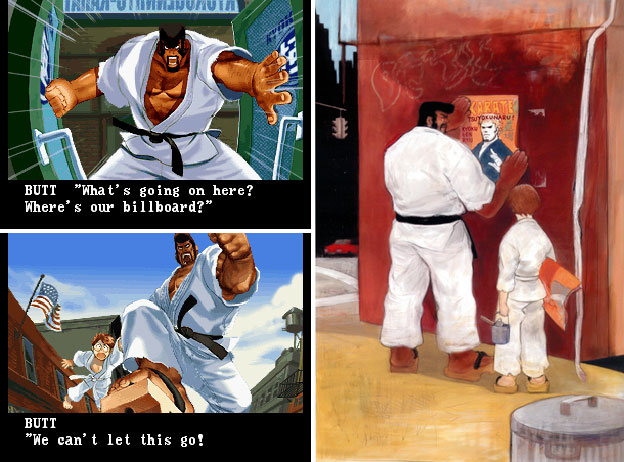
Marco was an absolute zealot of the Kyokugen way. He even carried around a large wooden sign of the dojo whenever he fought. He was inspired by Willie Williams, a black US fighter that dedicated himself to the Kyokushin style back in '70s. He believed in the system with tremendous fervor and even moved to Japan to follow in the footsteps of Mas Oyama and train in many of the same places. In 1979 during second ever Kyokushin World Tournament, held in Tokyo Japan, Williams representing the USA competed and came in third. At the time it was the highest ranking for a non-Japanese and the record remained until 1987 when the Swiss-born Andy Hug came in second. In 1980 Williams fought Japanese wrestling icon Antonio Inoki in a highly publicized bout. Inoki had fought Muhammad Ali a few years prior to a draw in the pro wrestling vs boxing contest. This time he wanted to take on the massive American and see if karate was stronger than pro wrestling. The two battled for just over 5 minutes, the first half of which was mostly both men posturing and putting on a show but the last few were rough. This match also ended in a draw but Inoki would suffer from a broken rib and Williams from a broken arm. Williams would be kicked out of the organizing body of Kyokushin for participation in the fight.
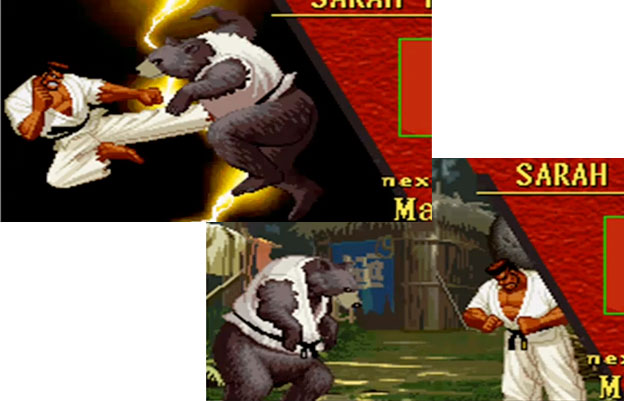
Williams, like many people in the '60s and '70s, had become obsessed with Oyama's total karate system. The martial arts had exploded in popularity thanks to the kung-fu films of the Shaw Bros. and Bruce Lee. Westerners were eager to master these exotic arts and signed up for kung-fu, karate, judo and jujitsu classes. Those that stuck with the arts became some of the early masters outside of Japan. Marco was a caricature of Williams. The character not only trained like Takuma but he even lived like a hermit out in the woods in order to focus on just his training. At the start of his stage players actually got to see Rodriguez sparring with a bear dressed in a karate gi. It was a funny visual however players that were familiar with the legend of Mas Oyama remember that he had fought a bear during his many adventures. This encounter was retold in the Karate Baka Ichidai manga and animé series. The fight made the man a legend, yet to Willie Williams he saw it as a testament to Kyokushin. Williams was actually filmed sparring with a bear for the documentary "The Strongest Karate" which was a thinly veiled Kyokushin propaganda piece. Williams was tall and strong but even the 6' 7" man seemed hopelessly ill prepared to fight the bear. Most witnesses said that the bear seemed drugged and confused. Even in such a state the bear managed to throw aside Williams with ease and handily absorbed the punches and kicks from the karateka.
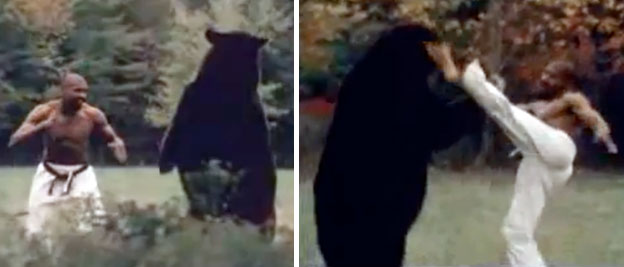
In the videogame however Marco was something else entirely. Just as Takuma Sakazaki was a super powerful version of Mas Oyama so too was Rodriguez when compared to Williams. There was a reason that Rodriguez was smirking and laughing at the characters in the KOF stage. He felt superior to them thanks to his hard training in Kyokugen. After all real men sparred with bears and lived off the land. His stage painted a clear picture as to his level of power. The man made a dumbbell out of boulders and used a wrecking ball as a punching bag. He even chopped down trees with his bare hands and feet. These weren't little trees either but giant hardwood trees that were wider than most cars. It was assumed that he had developed the level of power of Takuma, Ryo and Robert. This made him a perfect ambassador for Kyokugen in the Fatal Fury game and a fitting rival to Terry Bogard.
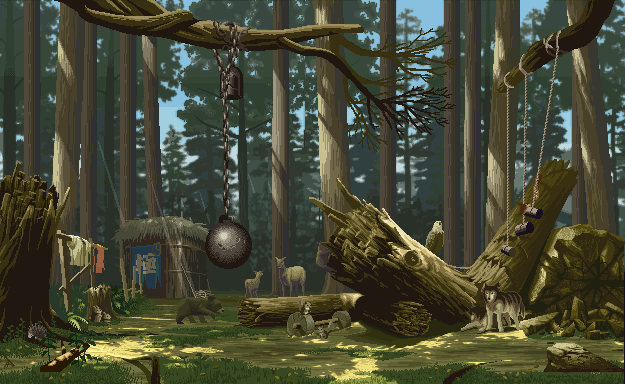
Marco was extremely passionate about the fighting art and vehemently defended it in the game. He was the ad campaign that the Sakazaki's needed to keep their gym alive. As much as he idolized Ryo he was probably not aware of the dark secret that Takuma was hiding. This complexity made Takuma and his fighting system very unique. His alter ego would be elevated to the status of major villain. With the mask on the character was ruthless in battle. He did not tire, did not suffer injuries and never seemed to age. Mr. Karate was the superior character in every regard. It was as if the mask had relieved Takuma of his responsibilities. He could put everything on the line because his children were safe. The person he fought knew nothing of the man behind the mask or his legacy. It was the same reason why superheroes wore a mask in Western comics, except instead of protecting innocent lives Mr. Karate was seeking out worthy opponents to destroy. While Takuma had an interesting life story he was the reason why I could not rank him higher in my list of greatest fighting game bosses. The character kept Mr. Karate grounded. Truly great villains had no family and held no allegiance. In fighting games this meant that the last man standing was the greatest fighter.
I would always consider Gouki to be the perfect fighting game boss because nothing held him back. Gouki had even made sure of that by killing his master and his brother. Zumbi had ditched Cobra and sold his soul to Macumba in order to become Zumbi Azul. Silber actively pursued the masters of fighting styles like a predator in nature stalking its prey. None of my top three had any regard for their opponents on themselves. Mr. Karate might be considered the greatest boss that ever appeared in an SNK game but he also had a weakness. Mr. Karate had an unbreakable will but Takuma Sakazaki's could still be bent by threatening the lives of his children. Silber did not have that going against him and that was why I ranked him higher.
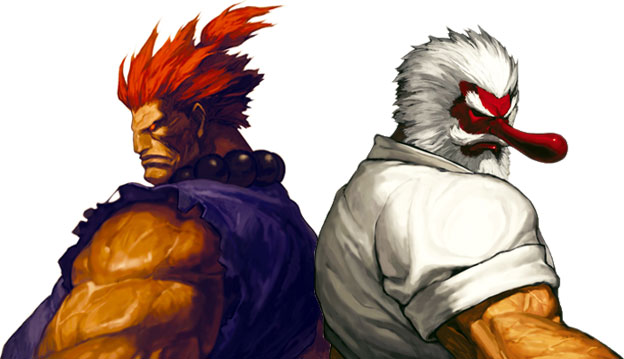
What do you guys and girls think? Who would you consider the greatest fighting game bosses ever designed? I'd like to hear about it in the comments section. If you would like to sponsor me please visit my Patreon page and consider donating each month, even as little as $1 would help make better blogs and even podcasts!

